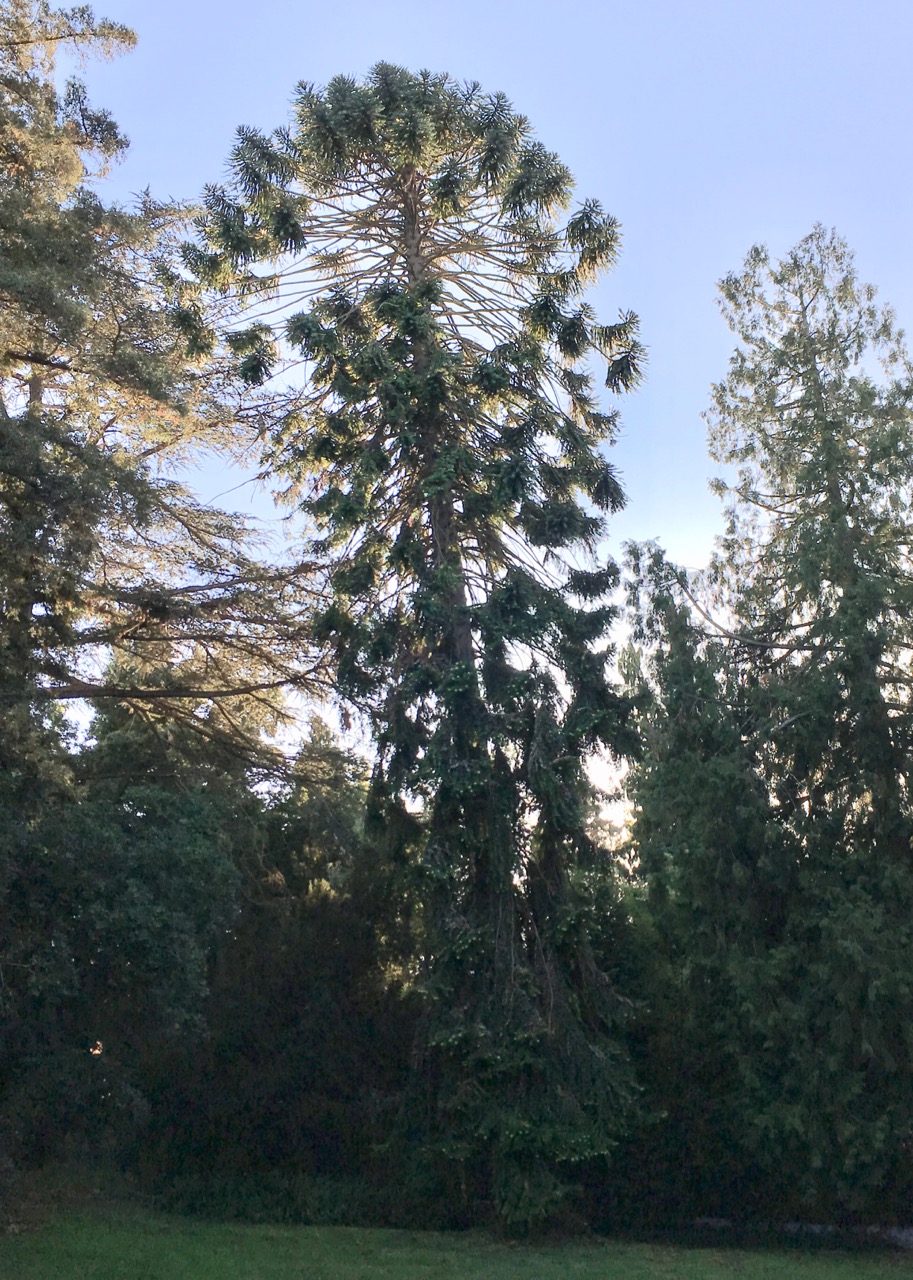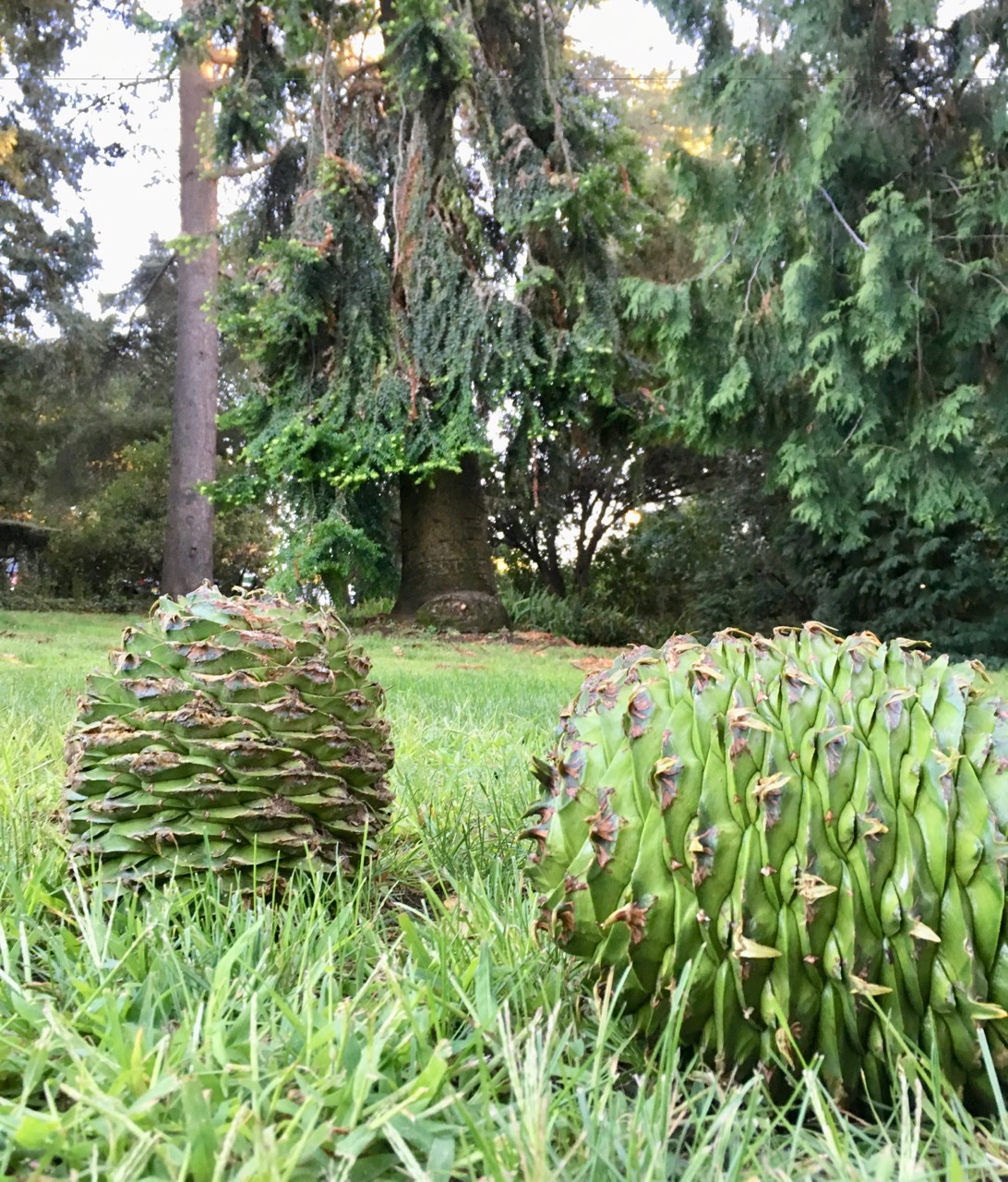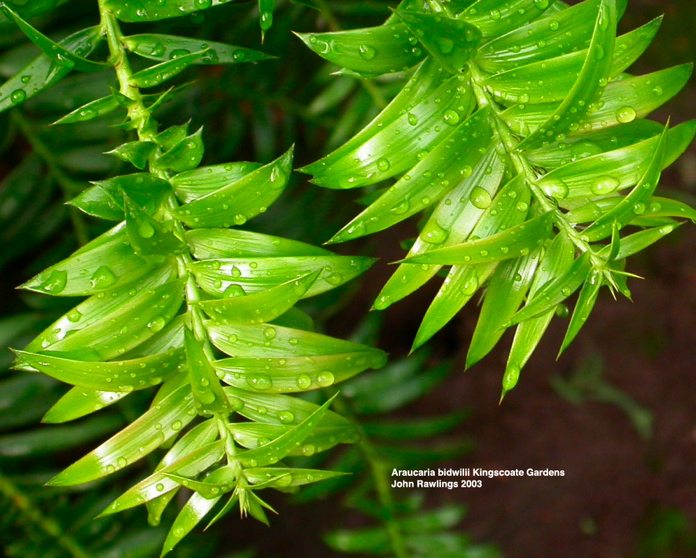Araucaria bidwillii
 bunya bunya
bunya bunya
A remarkable round-topped conifer, similar in look to the monkey puzzle tree and more common in cultivation, has small triangular leaves, extraordinarily sharp, and enormous green cones resembling, and at least as large as, pineapples. The great 2-inch long nuts are edible, preferably roasted. The tree exudes transparent resin, sometimes in the shape of icicles.
Two, our oldest specimens, planted in 1898, stand in Dohrmann Grove along Jane Stanford Way. Another, planted in 1908, is east of the Mausoleum, near the pathway. Kingscote Gardens’ specimen has pride of place at the end of the main lawn. A skyline specimen at the Meyer-Buck Estate produces seedlings around it. All our bunya bunyas have been seen to cone, though fallen cones can be hard to find. Sometimes you might get lucky: about eight were found in the lawn near the Kingscote Gardens tree in fall of 2017, right after the building reopened following extensive renovation. Some were split apart with the seeds gouged out, undoubtedly by squirrels. Others, green and intact, were being merrily kicked about by students passing through the grounds.
See a pair of bunya bunyas at 811 Hamilton Avenue, Palo Alto, and another pair in the median strip on Trinity Drive near Whitney in Menlo Park. Three old giants are next to the water tower at Holbrook-Palmer Park in Atherton. Two are on the west side of El Camino Real in Redwood City, just north of James Avenue; it is fun to try to spot their ferris wheel–like crowns from the top deck of the train at the Redwood City station. Indeed, bunya bunya–spotting is an enjoyable pastime when driving down to central and southern California, where they are planted more frequently.
Name derivation: Araucaria – Araucani Indians of central Chile; bidwillii – J. C. Bidwill (1815–1853), Australian plant collector.
About this Entry: The main text of this entry is from the book Trees of Stanford and Environs, by Ronald Bracewell, published 2005. Kingscote cones note added (Sep 2017, SP). Dohrmann and Mausoleum specimens’ planting years added (ref. William Parker, ”Some Stanford Heritage Trees,” 1977); Redwood City locations, other additions; all locations up to date (Jan 2023, SP).






